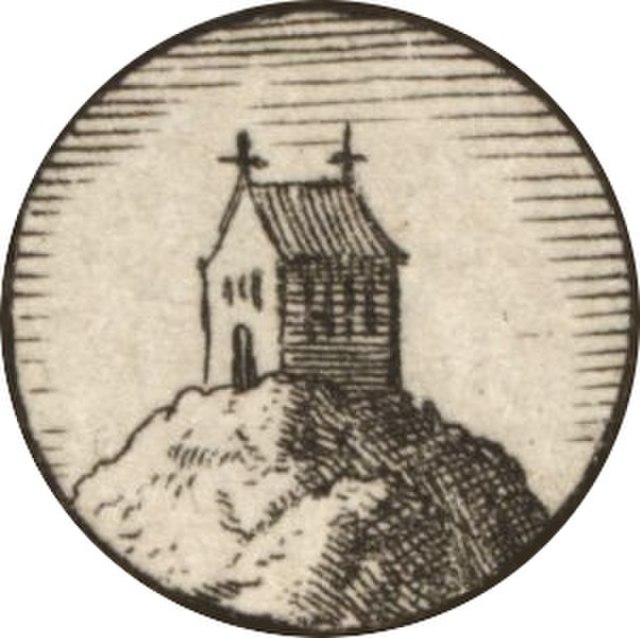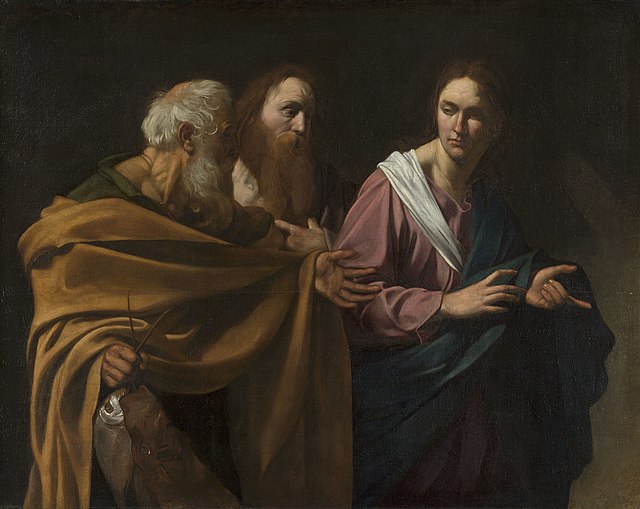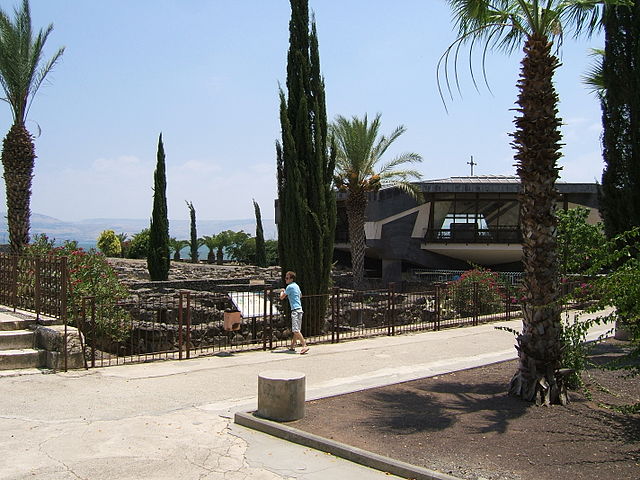The primacy of Peter, also known as Petrine primacy, is the position of preeminence that is attributed to Peter among the Twelve Apostles.
An imaginative depiction of "Christ handing the Keys of Heaven to the Apostle Peter" as written in Matthew 16:18, by Pietro Perugino (1481–82)
Icon of St. Peter (15th century, Russian State Museum, Saint Petersburg).
Stained glass window in a Catholic church depicting St. Peter's Basilica in Rome sitting "Upon this rock," a reference to Matthew 16:18. Most present-day Catholics interpret Jesus as saying he was building his church on the rock of the Apostle Peter and the succession of popes which claim Apostolic succession from him.
A 17th century illustration of Article VII: Of the Church from the Augsburg Confession, which states "...one holy Church is to continue forever. The Church is the congregation of saints, in which the Gospel is rightly taught and the Sacraments are rightly administered." Here the rock from Matthew 16:18 refers to the preaching and ministry of Jesus as the Christ, a view discussed at length in the 1537 Treatise.
Saint Peter, also known as Peter the Apostle, Simon Peter, Simeon, Simon, or Cephas, was one of the Twelve Apostles of Jesus Christ and one of the first leaders of the early Christian Church. He appears repeatedly and prominently in all four New Testament gospels as well as the Acts of the Apostles. Catholic tradition accredits Peter as the first bishop of Rome—or pope—and also as the first bishop of Antioch.
Saint Peter (c. 1610–1612) by Peter Paul Rubens, depicting Peter, vested in the pallium, and holding the Keys of Heaven
The Calling of Saints Peter and Andrew, 1603/1606, Caravaggio
St. Peter's Church, Capernaum on north side of the Sea of Galilee; a Franciscan church is built upon the traditional site of Apostle Peter's house.
The Calling of the Apostles Peter and Andrew (from the Maestà), c. 1308–1311








